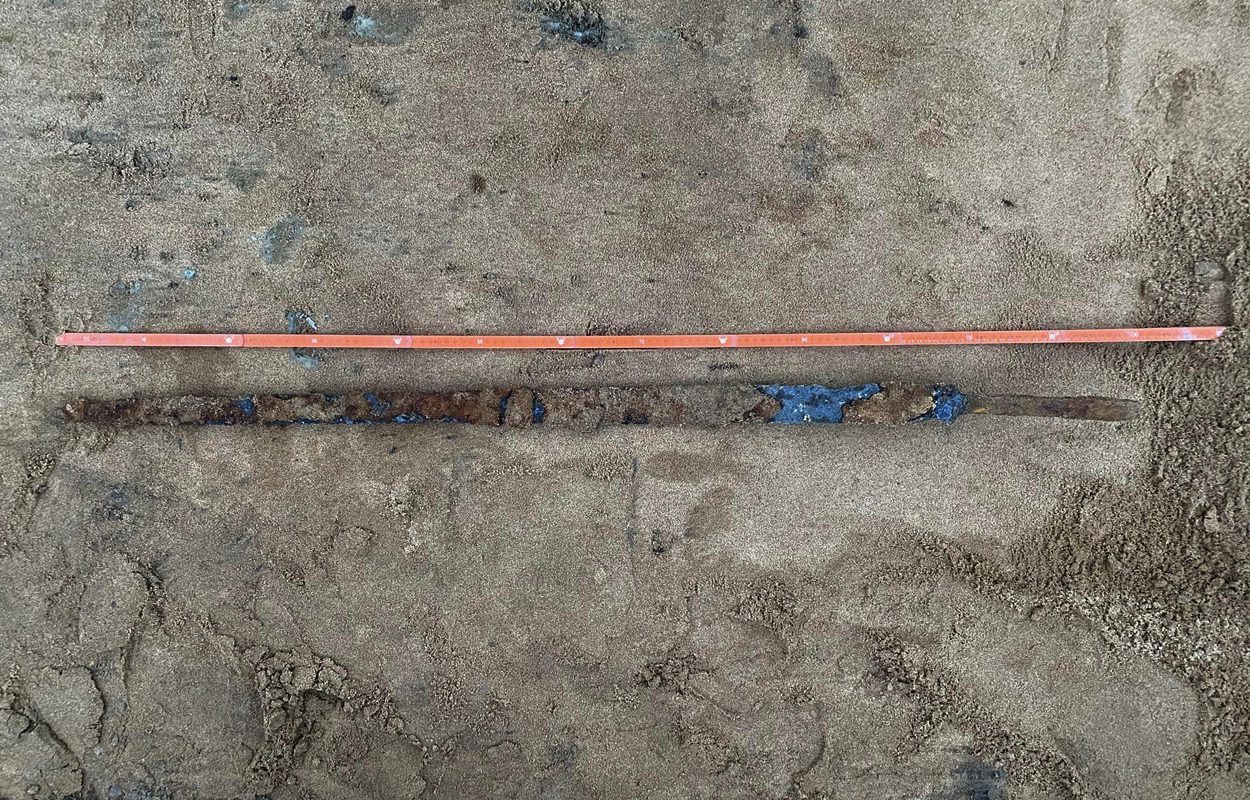Archaeologists have uncovered a medieval longsword during excavations in the Lilla Torg centre of Halmstad, Sweden.
The longsword was discovered in a burial containing the skeletal remains of a man at the former site of a medieval convent known as the Church of Sankta Anna.
The church and monastery was built between 1494 and 1503 with the support of Christina of Saxony, then Queen of Denmark.
Following its closure by the city magistrate in 1531, it was repurposed to be used as a hospital and then an armoury. The surviving buildings were destroyed in 1619 when a fire destroyed much of the city.
The burial would have been located at the south nave when the church was operated by the Franciscan order, a Mendicant Order of Pontifical Right for men.
Previous excavations have identified 49 graves associated with the church, but the longsword is the first example found within the Lilla Torg centre and suggests that the individual was a person of noble birth.

The longword, which measures 1.3 metres, was found on the individuals left side and is decorated with two inlaid crosses. Using X-ray imaging, the researchers have been able to visualise the decorations and determine that they were made using precious metals.
“It is an unusual find, and graves containing swords of this type have belonged to high-ranking persons of noble birth. A few similar swords have been found in medieval graves in Sweden before, including in the medieval Franciscan convent in Lund,” said Kulturmiljö Halland.
The sword has been removed for further examination and will be sent to Studio Västsvensk Konservering in Gothenburg for conservation.
Header Image Credit : Halland’s cultural History Museum





